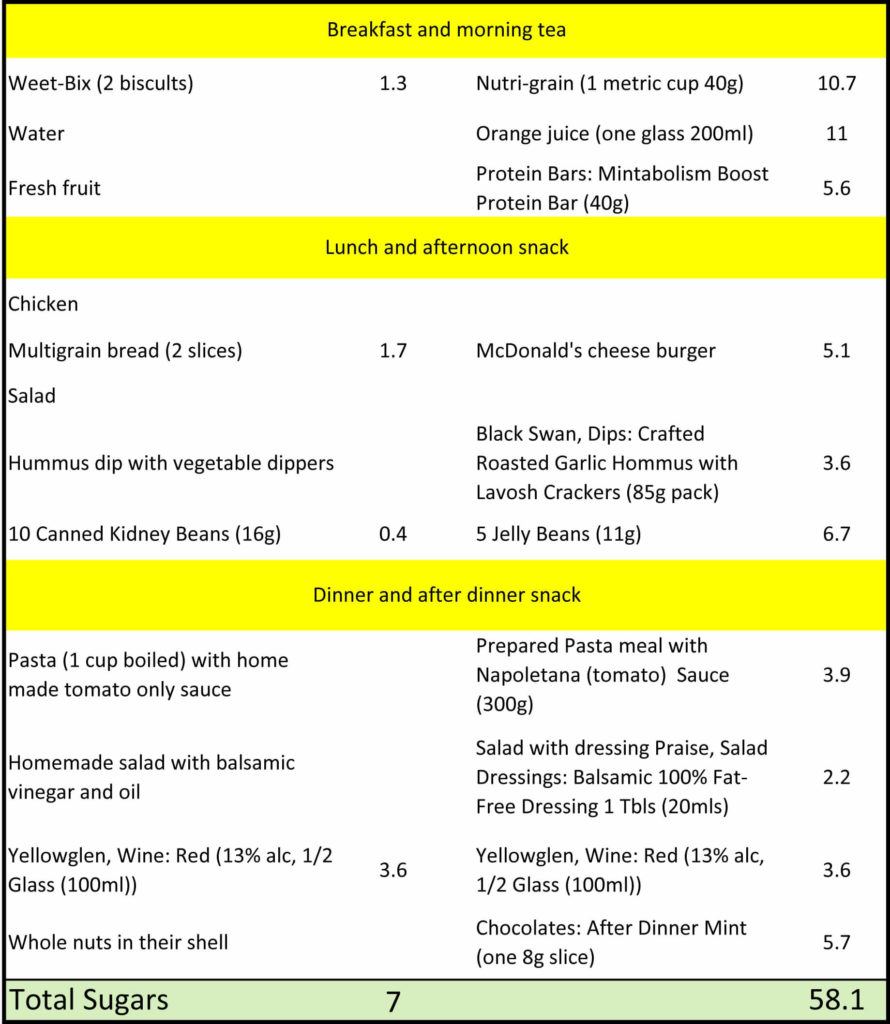On the heels of Halloween let’s talk sugar and how it can be part of a healthy diet.
By now, chances are you know that too much sugar is not good for your health…the problem is, what does “too much” actually mean?
How long is a piece of string?
Too much, too tired, too busy, too stressed, are all subjective assessments of our mind’s virtual reality and it is often incongruent to the physical world our body lives in.
Unless we have a steadfast benchmark of what “too much” actually is, then our ability to make objective healthy choices is severely comprised.
What is too much sugar?
WHO (World Health Organisation) guideline recommends adults and children reduce the daily intake of “free sugars” to less than 10% of total energy intake.
However, they also suggest a reduction to below 5% (about 6 teaspoons) will provide additional health benefits.
Qualified nutritionists will strongly recommend free sugar intake below 5%. “Free sugars” are especially sugars extracted from their plant-based origin and added to foods and drinks. It does not include sugars naturally found in fresh WHOLE fruits, vegetables, and milk.
How to objectively calculate too much sugar
If you love math and counting stuff, then this exercise will be easy for you. All packaged and manufactured foods must, by law, have a label that tells you what is in the product, including how much sugar.
Therefore, to make healthy choices as recommended by WHO, go to the column titled “per 100g” on the packet’s label.
If the total sugar per 100g is 5g or less, then the energy intake from sugar in the product will also be 5% or less. Note we are only talking about sugar, the product could have fat which will increase its total energy value.
Lets continue; record your total daily free sugar intake by writing down the sugar in grams you actually consume from packaged foods. For example, a packet of crackers has 5g of sugar per 100g, and if you ate the whole 200g packet then you ate 10g of sugar.
With a clear record of your sugar consumption you will objectively know if you had too much sugar, that is, over 25g (6 teaspoons). Simple…..right?
Healthy eating of sugar is easier with whole food
If you are like me, and the thought of counting and recording food makes you feel nauseous, then wholefoods are the solution for you. Let’s take a look at how easy it is to be healthy with whole foods and how quickly sugar can add up with processed foods:
NOTE: This example is for illustration purposes and not a meal recommendation. I used data published by http://www.calorieking.com.au
.

.
Be thoughtful and not extreme
There are tonnes of amazing stories of how people have quit sugar and were instantly transferred. Of the programs I have studied, none offer a sustainable solution that is easy to implement (in my opinion).
Many “I quit sugar” programs are extremely restrictive and frankly not natural. The devil is in the detail….instead of sugar many promote artificial sugar substitutes.
Consider this; white powders are not natural, even if they do originate from plants. An example is Stevia, it is currently hailed as the king of sweeteners
Stevia is a green herb like plant and in its natural plant form it’s not that sweet, and you can’t eat too much because the chewing process gives it a bitter taste. Mother Nature really does protect us from ourselves!
Artificial sweeteners can be very effective in helping to transition off sugar, but at some point, the healthy adult option is to wean your self off the dummy and onto the wonderful world of whole foods.
Exercise can help curb sugar cravings
If after exercise you feel ravenous, then the following may be hard to swallow, but give me a chance to explain some research done by the University of Western Australia.
The study was published in the International Journal of Obesity (2013) and revealed that HIIT (High-Intensity Interval Training) was able to lower levels of ghrelin, a hormone that stimulates appetite. The study linked intense workout routines to higher levels of blood lactate (lactic acid resulting from muscle use) and blood glucose.
When both blood lactate and glucose are low, they make you feel hungry. Another way of looking at it is; if you are spending an hour on the treadmill and barely raising a sweat, you are actually working up an appetite!
PLEASE, I am not suggesting that steady state exercising like the treadmill is unhealthy – it truly is excellent for your health and fitness!
That said, it can’t hurt to increase the intensity of your workouts – bear in mind your current fitness levels and don’t go overboard!
Our 9 minutes to fitness program is a HIIT workout, that give you a sugar like high without the calories! Click below for more information and to download your Free 9 minute workout.
Live well with fitness!



Recent Comments